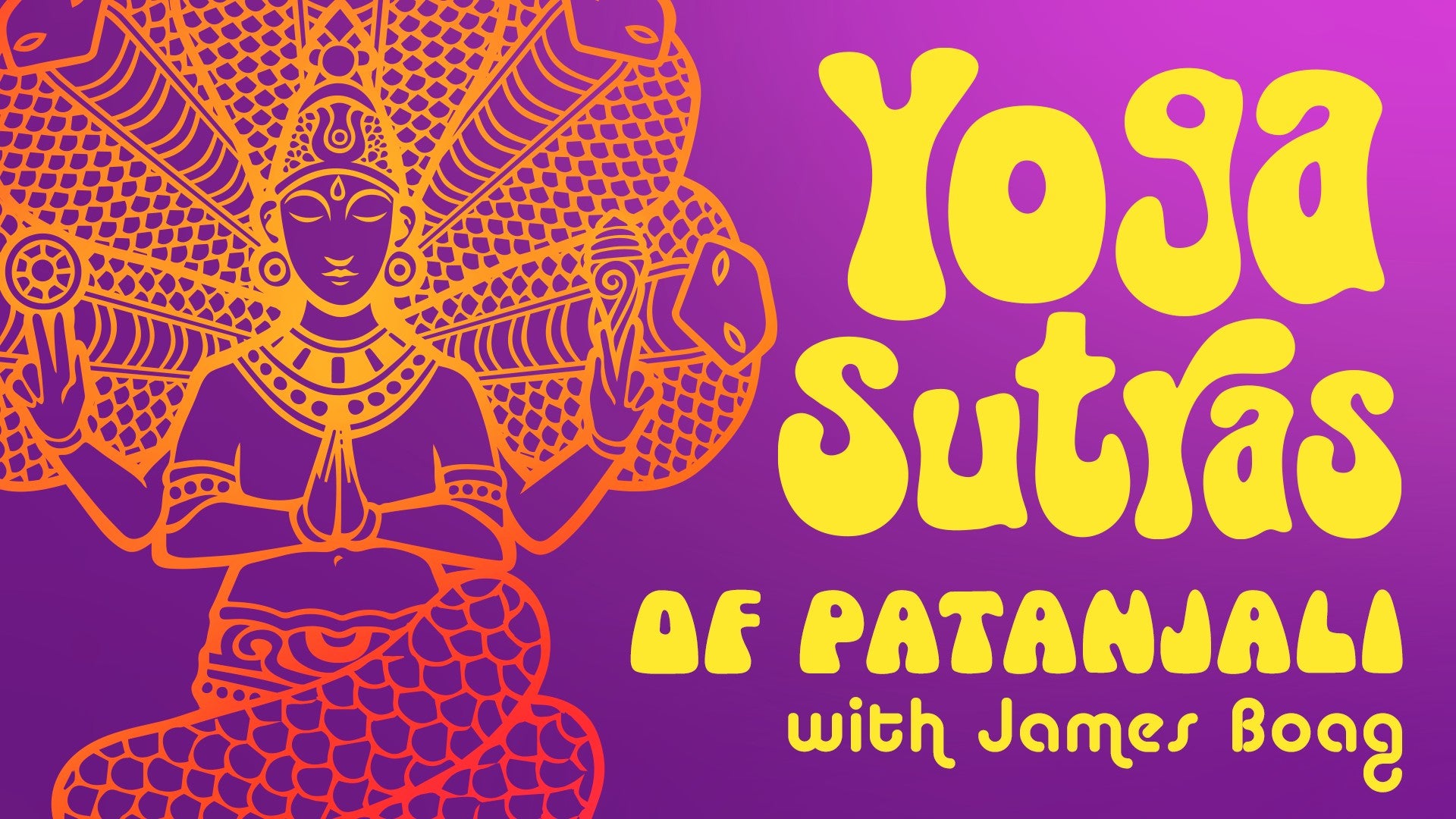Description
About This Video
Transcript
Read Full Transcript
In sutra 54, Potanji now defines the 5th of his a stanza of his eight limbs. We've seen in the previous sutras this movement or this suggestion of the movement of gross to subtle. And previously, we've had the description of the manas being a bit like a bridge between the those powers of sense and action with which we interact with the external world and the internal lenses or layers of our awareness. Pretya Hara, the 5th of the limbs, is sometimes also described as a kind of a bridge between the relatively speaking external James. Relatively speaking, of Yamani, Yamah, Astra, and Pranayama, and the internal limbs of Darnanjana and Samadhi, which we'll get to in a moment.
But is often sometimes described as the bridge or the gateway between the relatively external the relatively internal. Let's see how potentially defines. He says even. So is when the senses and the action powers to, when the India, when they follow the essential nature of awareness rather than coming into adhering contact with, and then getting overly identified with their objects. It's quite a long Sanskrit sentence. It packs a lot in.
So Pratiya Hara, It's when it's as if the senses instead of, getting caught up and identifying with the external things that they are relating to or processing. Instead, they follow the essential nature of awareness. So what does that mean? In other words, you could say Pratyajara, it's when the sens is act as if they are following and are attuned to the essential nature of awareness, and they're not getting overly embroiled and meshed caught up with the external things. So those are kind of three ways of pretty faithfully rendering the Sanskrit in English. What does this mean in more, let's say, practical terms?
Sometimes people talk about Pratyajara as sends withdrawal And this is not, strictly speaking, an inaccurate translation. But what's potentially said is when the senses follow as it were the internal essential awareness rather than getting attached to and adhering to the external things. He doesn't mention them not relating to the external things or turning away from them, but rather when they are relating to the external objects of reality, still staying connected to and turning back towards the underlying source consciousness. So the way I think of Pratya Harin is it's when we're in, in all our sensory and active engagements, we take that experience and offer it back to the source. When we look at the word, we can it in more than one way, which is not at all uncommon in Sanskrit.
So one way The verb is which gives us the word, for example, Hada, name of Shiva, and Hadi, name of Vishnu. Hara means the one who takes away, who removes. So, to take away, Haraati, he takes away. But when we add the prefix, ah, so means he brings towards or brings back. And to bring back towards our self. Another way we can construe this, our harder in Sanskrit has the sense of things that we feed ourselves, things that we eat.
So to be near our heart, it means to to fast, for example, to go without feeding oneself. Pratya Hara, to take the things that one feeds oneself with back to the source. So rather than, you know, I'm practicing Prathya Harris, so I'm gonna, you know, close all my organs of sensory's activity. That could be a practice. But again, this is a polyvalon Sutra.
All times all situations practice. Something we can work with constantly steadily in all aspects of life. So I think a very practical way to think of Prathyara is whatever we are doing, can I offer that experience back into the fire of centered awareness? Into the fire of source intelligence. This is what happens when I do that?
Tataha, Karamavashatinrianam. Then there's the idea. The the powers of sense and the powers of action. Krishna Boag Baghavad Gita says, in and of their nature, they have a churning stirring up influence, the sense and action powers, because That's what they're designed for. They're designed to help us interact with this world of constant change and myriad wonder.
But he potentially says, through the prats of from the prats of when we stop the sense powers causing us to become overly enmeshed and embroiled in all our experiences When instead, we take those experiences back to the source, and we allow all our sensory experiences to actually reaffirm our connection to the deeper underlining, underlying intelligence and awareness, then what happens, Tataha, Panamabashatiindrianaam, then inrianaam, of the of sense and action powers. Then it's like they are. They become under the control of under the active will, Panama of the ultimate. So then rather than our individual awareness, being at the mercy of the external things that come and go. We become much more centered, much more steady.
My teacher used to say it's like, stop being the football to the environment. That when things are agreeable, it's like you get kicked up and you're flying, and then when things don't go your way, you get smashed down to the ground. Instead, of being the football to the environment, be like Andrea Pierlo. Now, maybe many of you have not heard of Andrea Pierlo, Andrea Pierlo is an Italian football player who is an archetypal mid field Maestro. So I'm talking about football I'm from the United Kingdom.
I'm talking about what sometimes people call soccer, the round ball, the beautiful James, and Andrea Piedler, He's a master he was he's putting his retired now. Yeah. He's a he's a masterful player. He makes it look so easy, but he's like the playmaker. He would orchestrate things. Calmly.
So instead of being the football kicked here and there, be the player. The masterful player. The conductor. When we practice, we can invite ourselves into that state because the the the kind of secret of is is that we don't have to be the conductor then. We get out of our own way, and we can align with an intelligence, which is so much faster, deeper, wider, than our mind or our sense of I, me, and mine could ever actually grasp. When we practice offering all our experience back to the underlying source awareness, then we're able to more and more act from there. And attune to that deeper essential consciousness.
Yoga Sutras of Patanjali: Sadhana is a Regular Practice
Comments

You need to be a subscriber to post a comment.
Please Log In or Create an Account to start your free trial.








